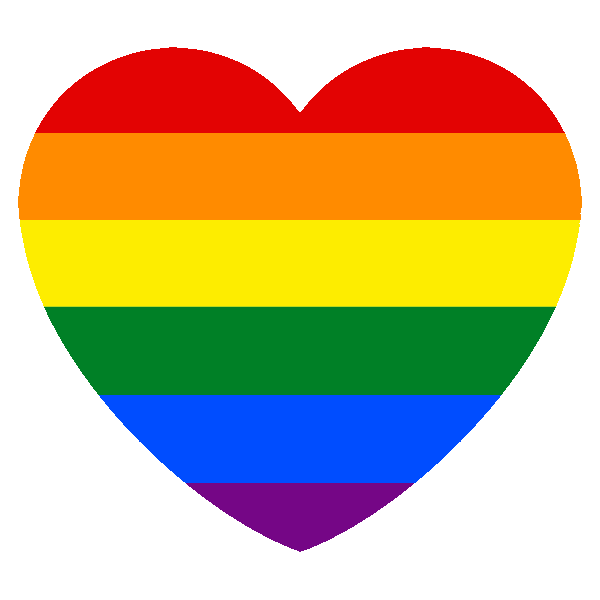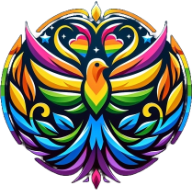Pride Has a History—And It’s Way More Than Glitter

Okay, let’s be real: Pride today is full of rainbows, drag, glitter, and corporate logos slapped on everything from coffee cups to sneakers. And sure, that’s fun—but the real story behind Pride? It’s gritty. It’s brave. And honestly, it’s kind of wild. As a proud bisexual human who’s been asked “but which do you really like?” way too many times, let me take you on a tour of how the LGBTQIA+ community got here—and all the stuff we’ve faced along the way.
Queer Folks Have Always Existed (Surprise!)
Let’s start way back—like, Ancient Greece back. People loving the same gender or not fitting into the male/female binary isn’t some modern invention. In fact, Greek philosophers were literally writing poetry about their male lovers. Indigenous cultures around the world recognized what we might now call nonbinary or Two-Spirit people. Queerness has always been here; it just wasn’t always labeled.
But then colonization, Christianity, and a whole lot of repression rolled in like a buzzkill storm. European empires started pushing strict rules about gender and sexuality wherever they went, including criminalizing same-sex relationships. Spoiler: things got rough.
Centuries of Silence—and Resistance
In Europe, especially during the 1500s onward, laws made it super illegal to be anything other than hetero. Like, death penalty illegal. Queer people lived in fear, but that didn’t stop underground communities from forming. Secret signals, coded letters, hidden bars—you name it, we figured it out.
In the 20th century, especially in cities like Berlin, queer folks started being more open again—until the Nazis came to power. Under Hitler, LGBTQ+ people (particularly gay men) were arrested, tortured, and killed. Pink triangles were sewn onto their uniforms in camps. That triangle? We later took it back as a symbol of survival and defiance.
Mid-Century America: Lavender Scares and Double Lives
Meanwhile in the U.S., the 1950s weren’t exactly a Pride parade. During the “Lavender Scare,” thousands of people were fired from government jobs just for being gay or suspected of it. Being queer was considered a mental illness by the American Psychiatric Association until 1973. (Yes, that recently. I know—wow.)
Queer people had to live double lives. Relationships were kept secret. Police raided bars. And being outed could ruin your life. Still, communities found ways to support each other and push back. Enter: the spark that lit the fuse.
Stonewall: Where Pride Was Born
Picture this: It’s June 1969, late at night in New York City. The Stonewall Inn, a gay bar in Greenwich Village, gets raided by police—again. But this time, people fight back. Led by trans women of color like Marsha P. Johnson and Sylvia Rivera (give them their flowers, please), a full-blown uprising erupts. It lasts for six nights and kicks off the modern LGBTQIA+ rights movement.
A year later, folks returned to the streets—not to riot, but to march. It was the first Pride. And let me tell you, it wasn’t sponsored by vodka brands. It was raw, it was loud, and it was needed. Pride Month, now celebrated every June, grew from that spirit of resistance.
The 80s and 90s: Love, Loss, and Rage
Then came the AIDS crisis, and it hit hard. Thousands of gay and bisexual men (and others) were dying while governments dragged their feet. The media called it a “gay plague.” Families abandoned their own. It was horrifying.
But our community rose up. Groups like ACT UP channeled rage into activism. Queer folks demanded medical research, fought stigma, and literally saved lives. Pride became about survival—and honoring the ones we lost. That fight changed healthcare policy and brought LGBTQ+ issues into the mainstream.
Trans Visibility, Finally
Here’s something we have to own as a community: trans and nonbinary people—especially Black and Brown trans women—have been on the front lines forever, but haven’t always been given their flowers. That’s changing, but not fast enough.
Now we have icons like Laverne Cox and Elliot Page, and we’re having important conversations about pronouns, gender fluidity, and bodily autonomy. But violence against trans people—especially trans women of color—is still heartbreakingly common. Pride means standing with them, always.
Global Pride: Joy and Injustice
Pride has gone global. From São Paulo to Seoul, people are marching in the streets, waving flags, and demanding change. Some countries, like Canada, Argentina, and South Africa, have made real progress on LGBTQIA+ rights. Others? Not so much.
Being queer is still illegal in over 60 countries. In some places, it can get you imprisoned—or worse. So while we celebrate, we remember: Pride is protest. Pride is solidarity. Pride is global.
But Let’s Not Pretend It’s All Rainbows Yet
Even in places with marriage equality and anti-discrimination laws, we still deal with a lot:
- People getting fired or evicted for being queer (yes, still)
- Trans kids being denied healthcare
- Queer books being banned in schools
- Hate crimes and toxic “debates” about our existence
- Conversion therapy (somehow not banned everywhere yet)
And bisexuals? We’ve got our own battles. We’re often erased, fetishized, or told to “pick a side.” But let me say it louder for the people in the back: we’re real, valid, and fabulous.
Pride Is Power
At its heart, Pride is about saying: “I am here. I exist. And I deserve to live fully, freely, and unapologetically.” Whether you’re marching in the streets, hanging a tiny flag at your desk, or just learning to love yourself in a world that told you not to—that’s Pride.
Our history is long. Our challenges are real. But so is our joy. So whether you’re gay, bi, trans, ace, pan, questioning, or just figuring it out—welcome. This is your story too.
Happy Pride. 🌈💖

- Art
- Business
- Causes
- Crafts
- Community
- Dance
- Drinks
- Education
- Fashion
- Film
- Fitness
- Food
- Games
- Gardening
- Health
- Home
- LGBTQ+ News
- Literature
- Music
- News
- Nature
- Networking
- Oddities
- Other
- Party
- Politics
- Religion
- Science
- Shopping
- Sports
- Theater
- Wellness



